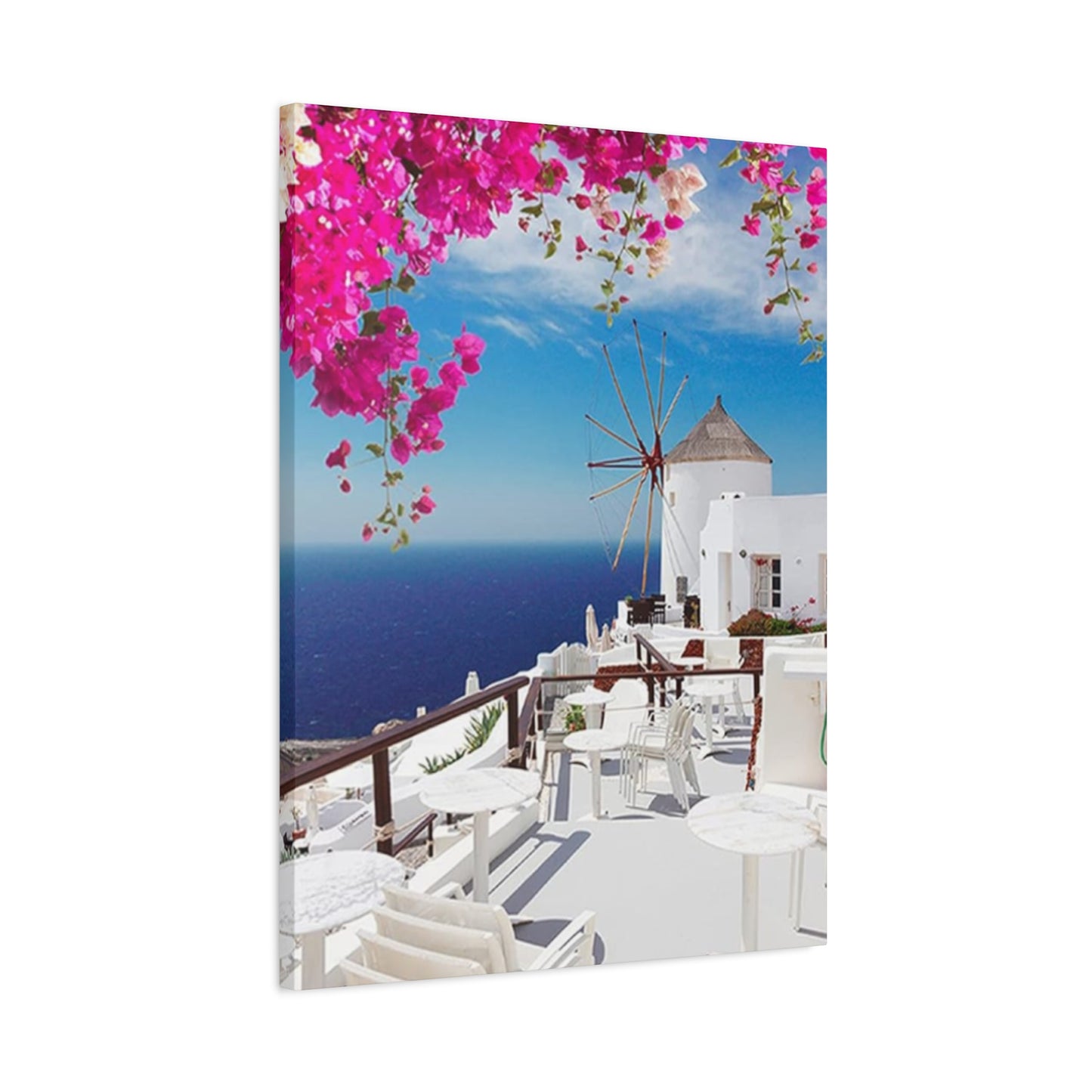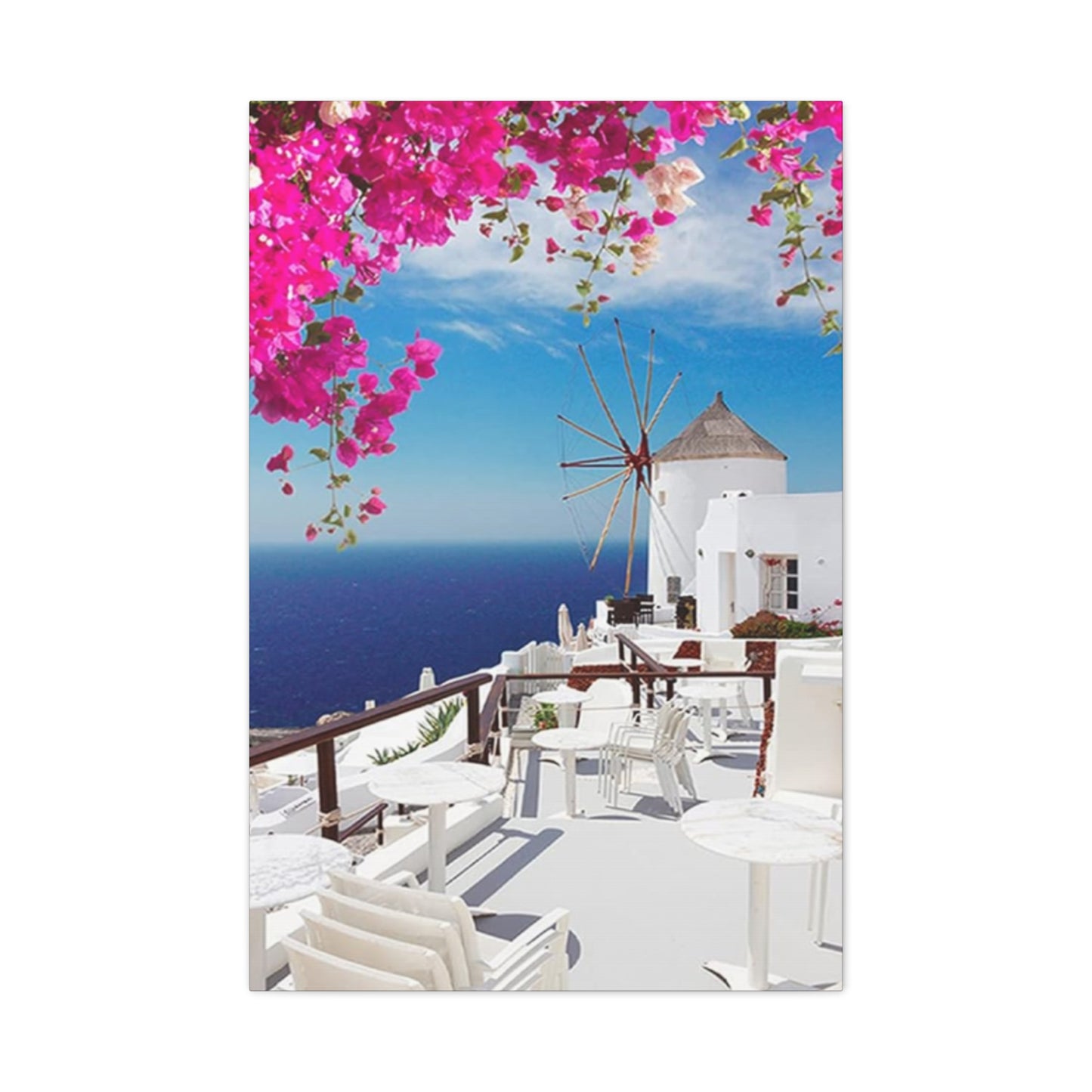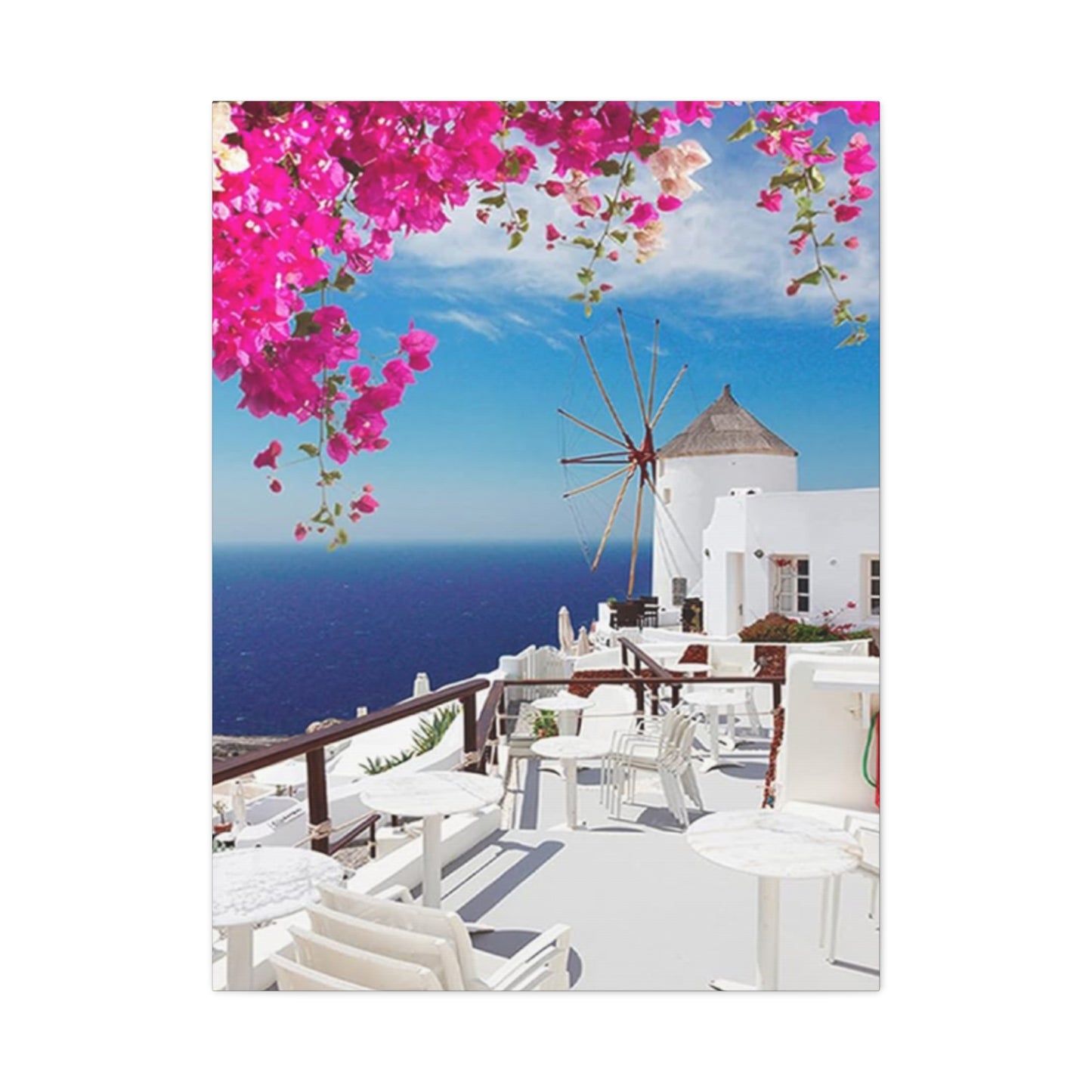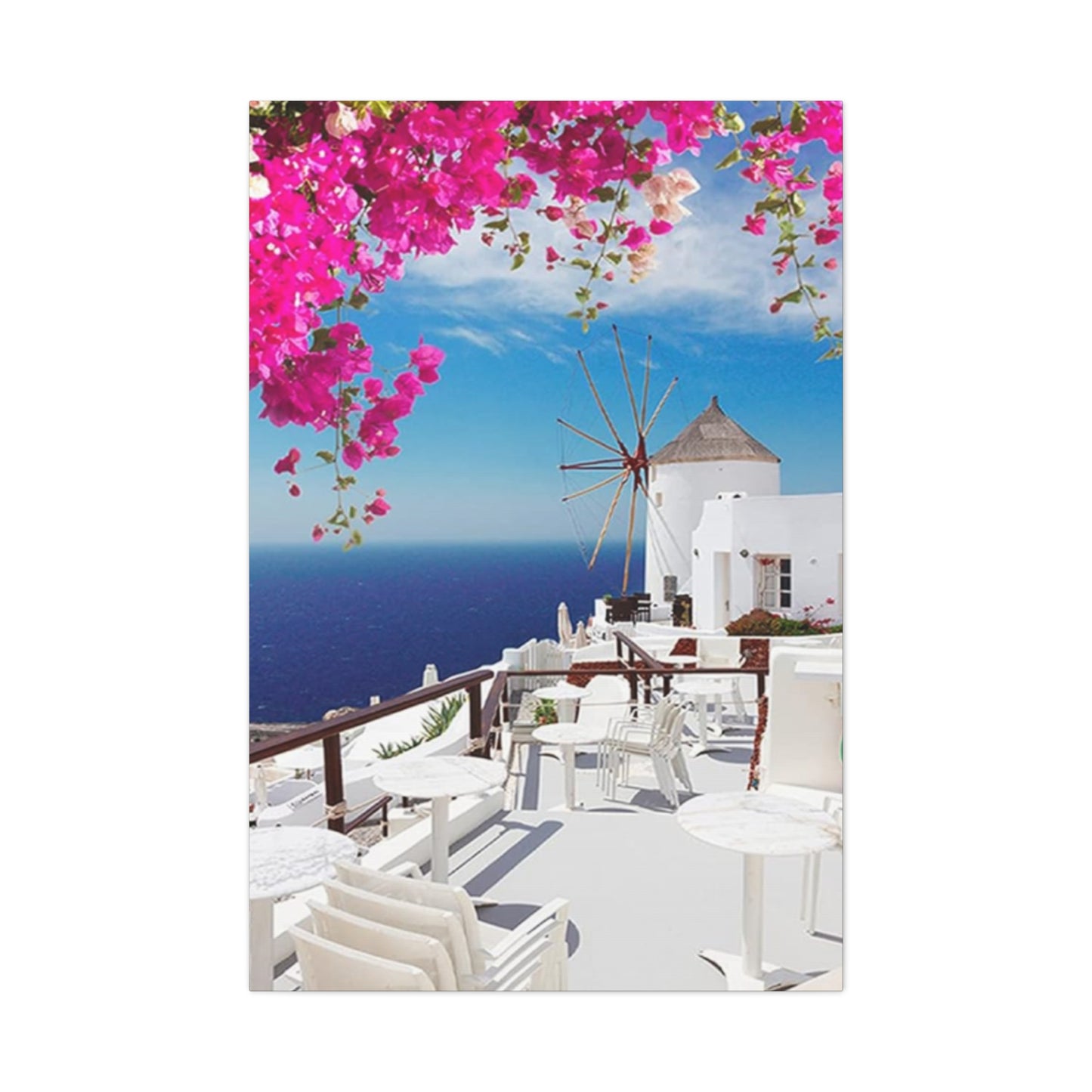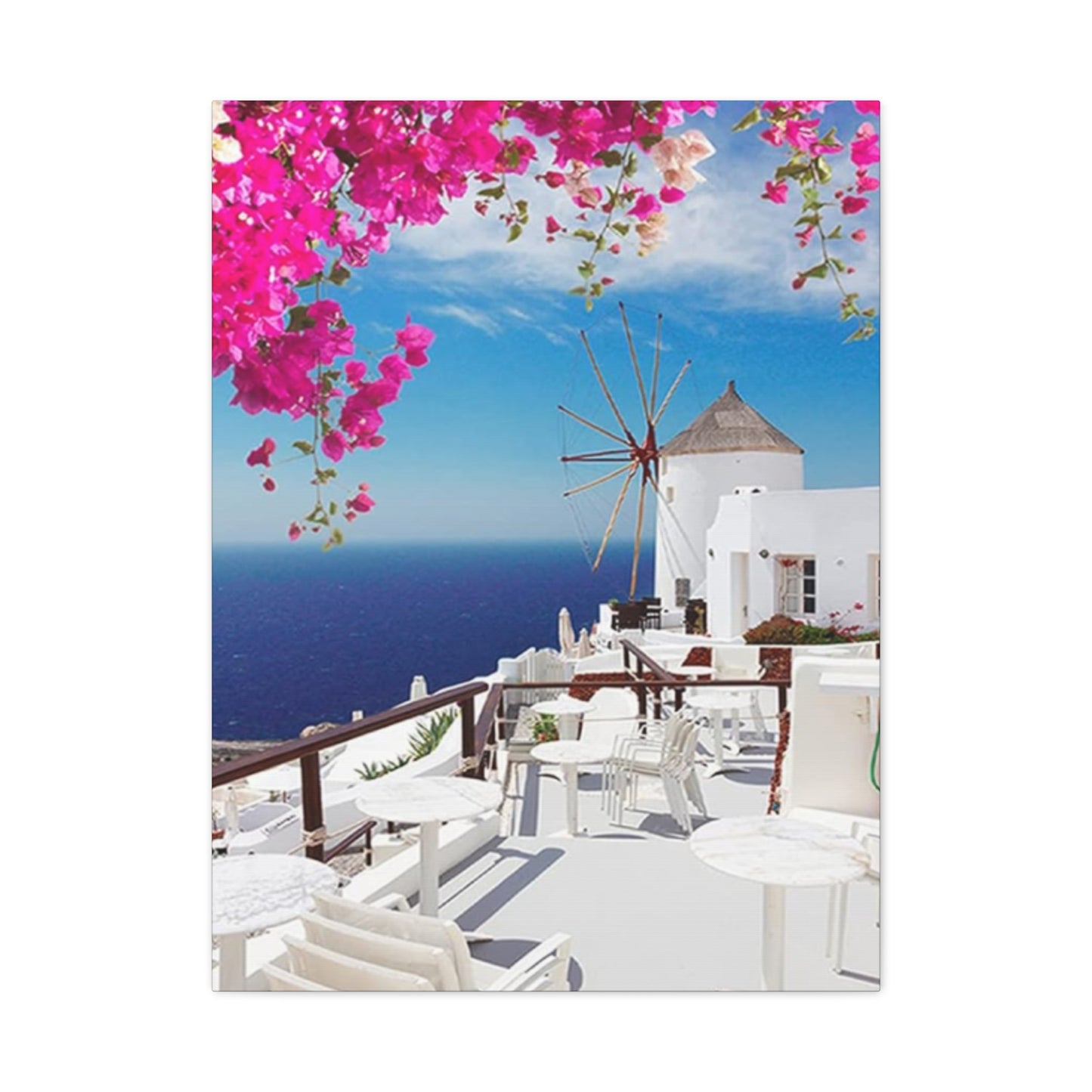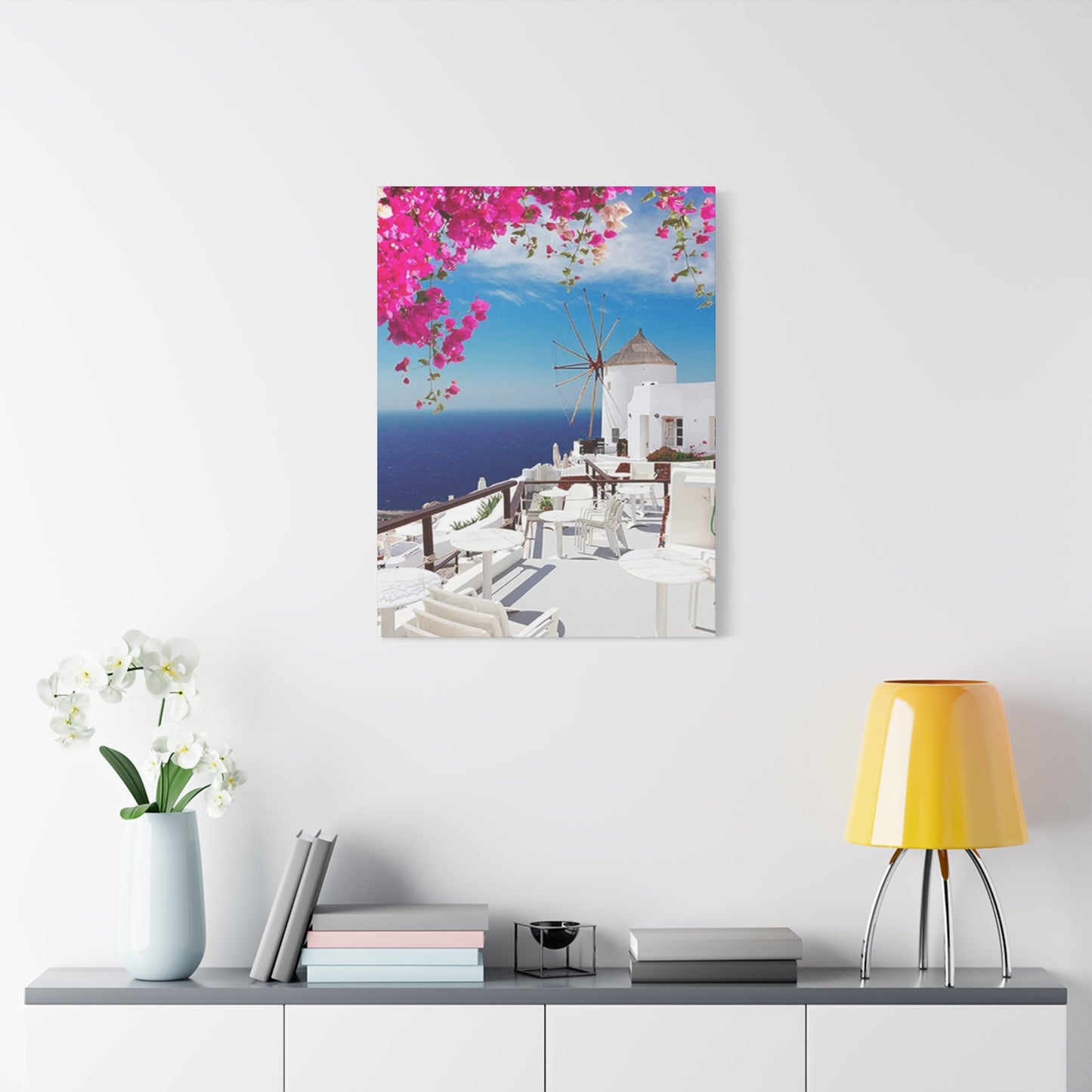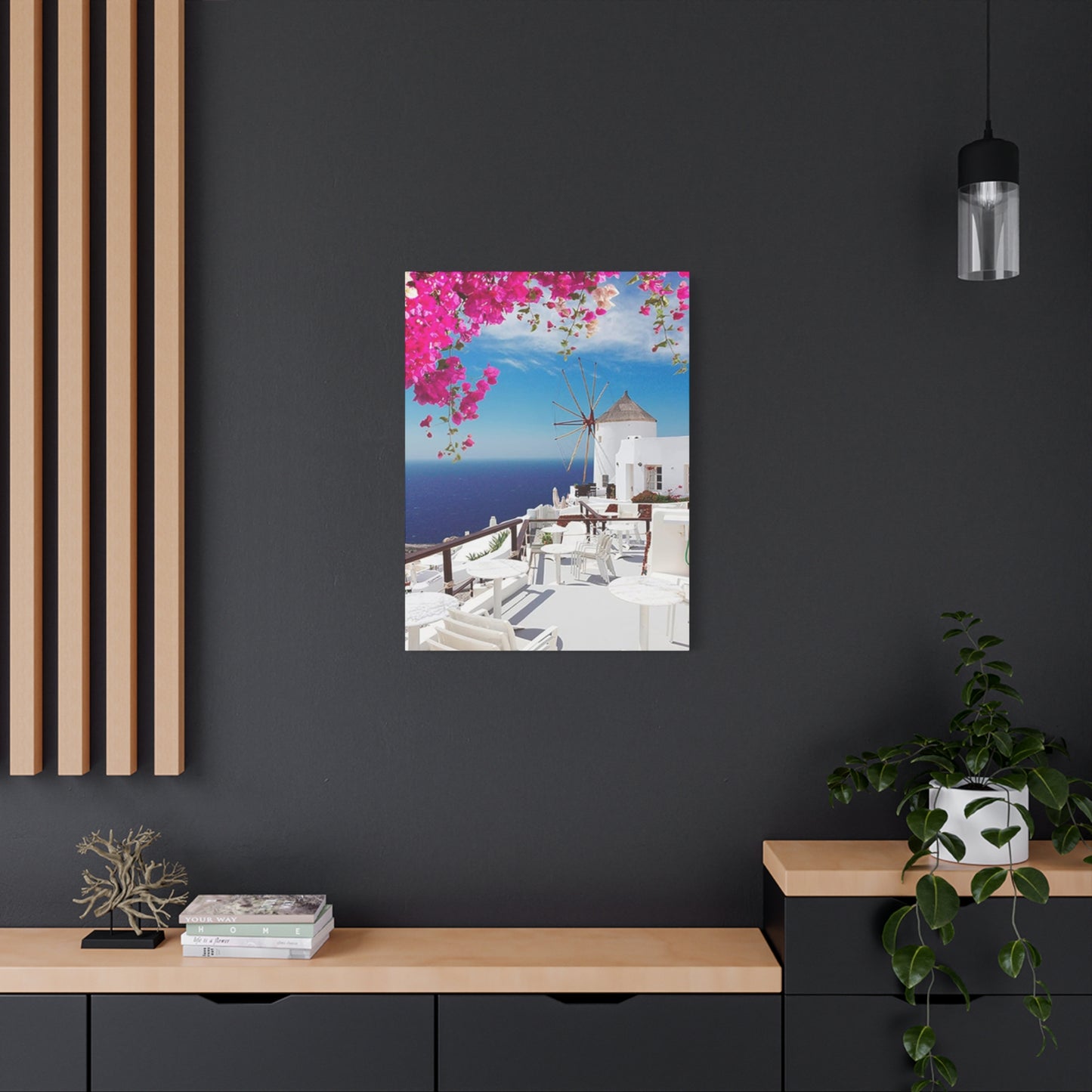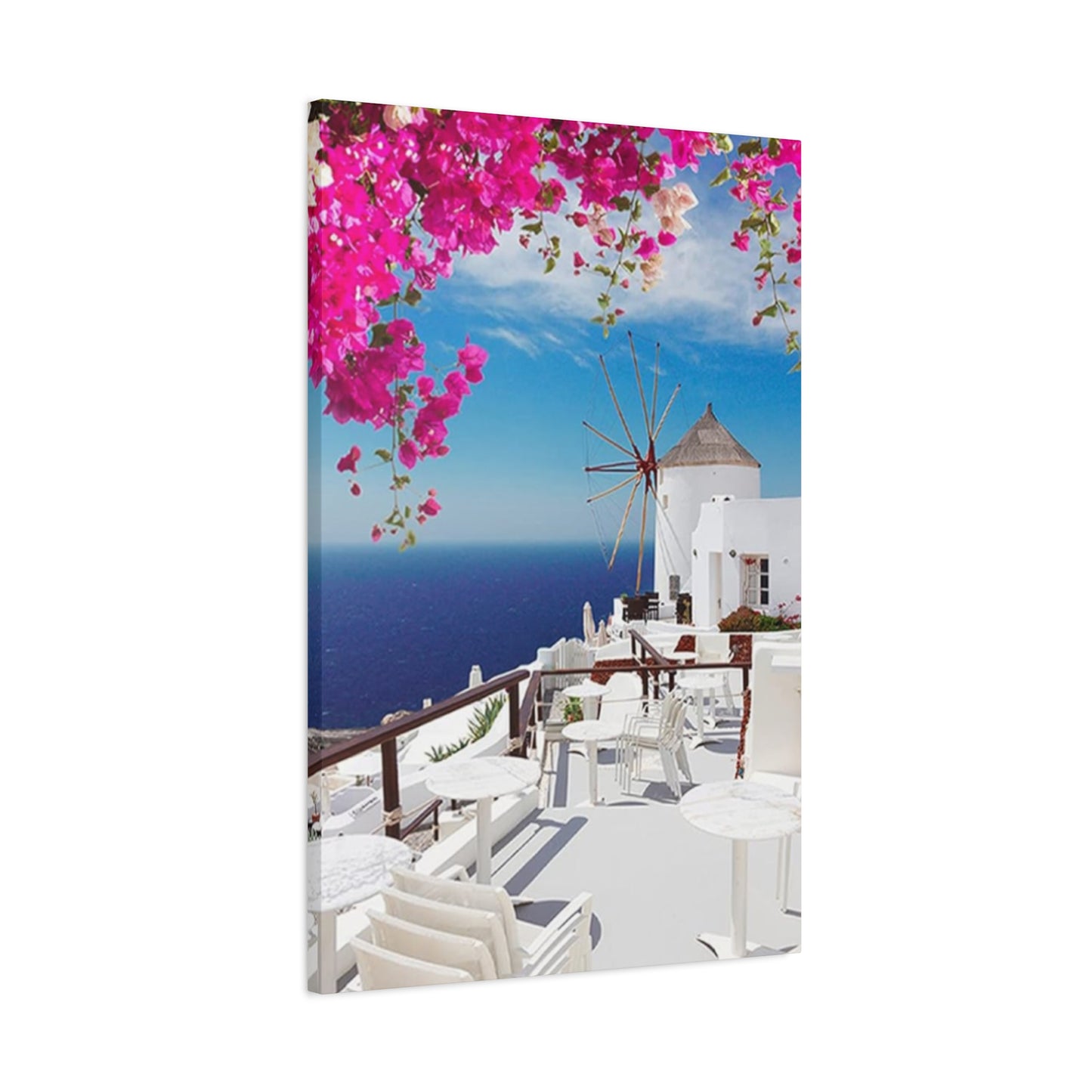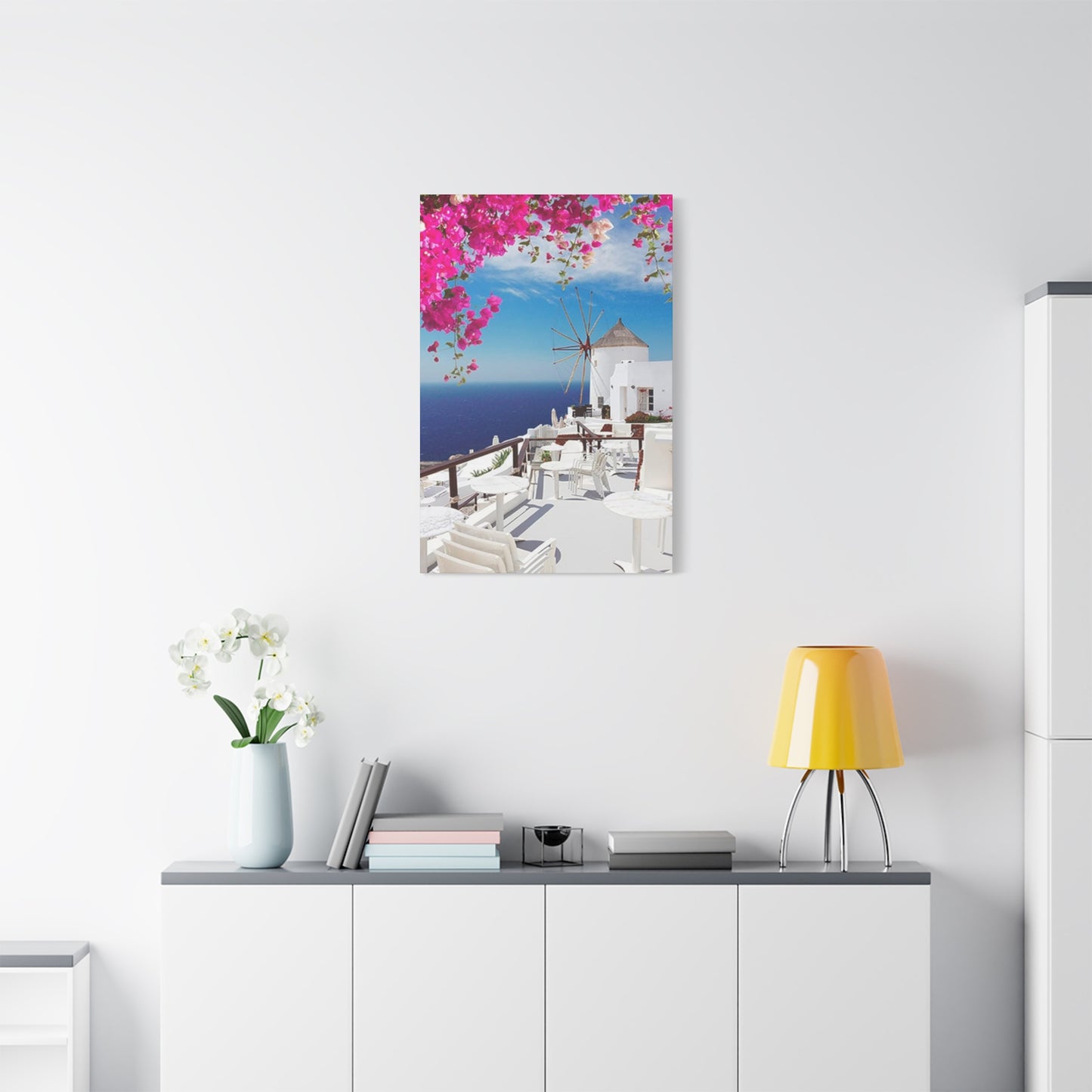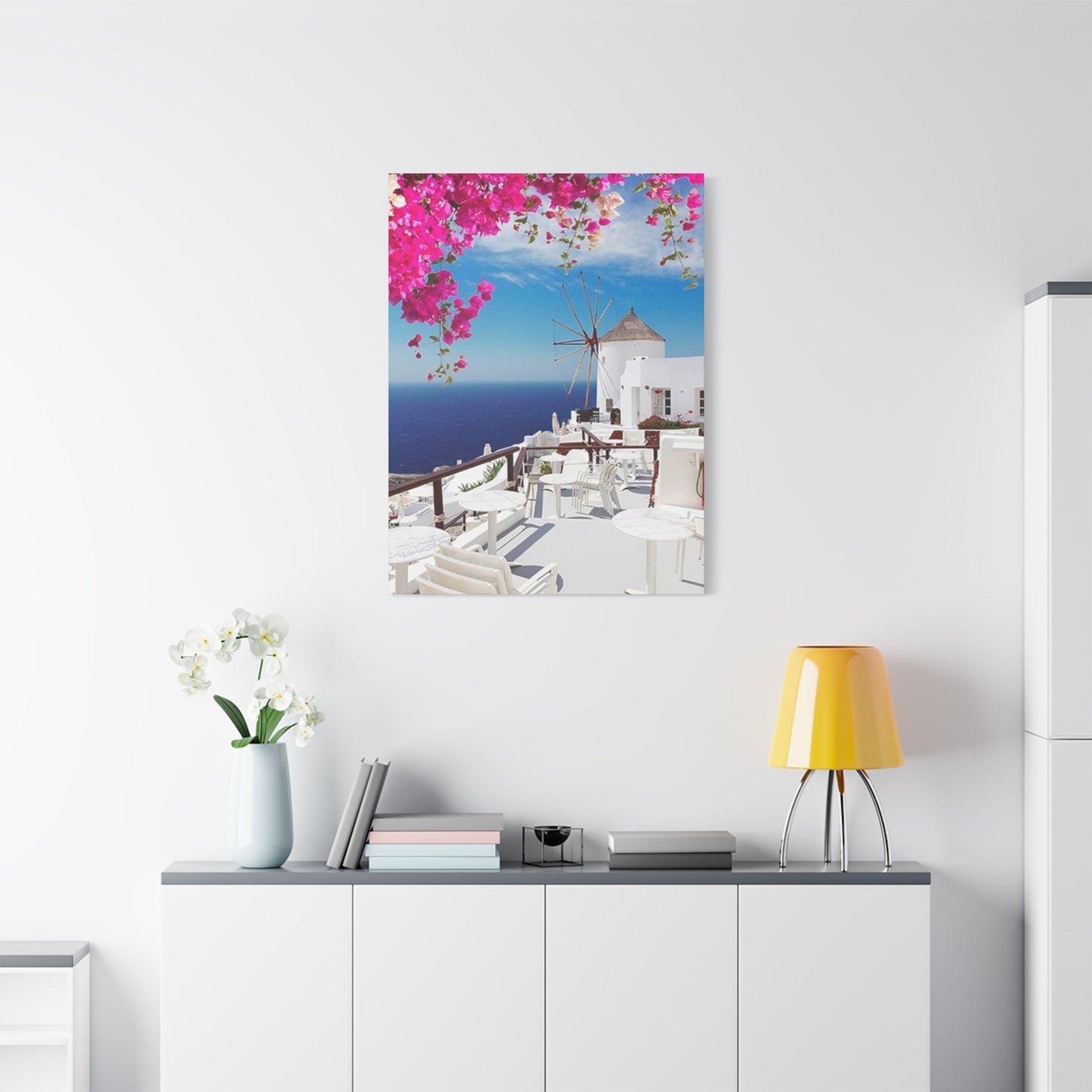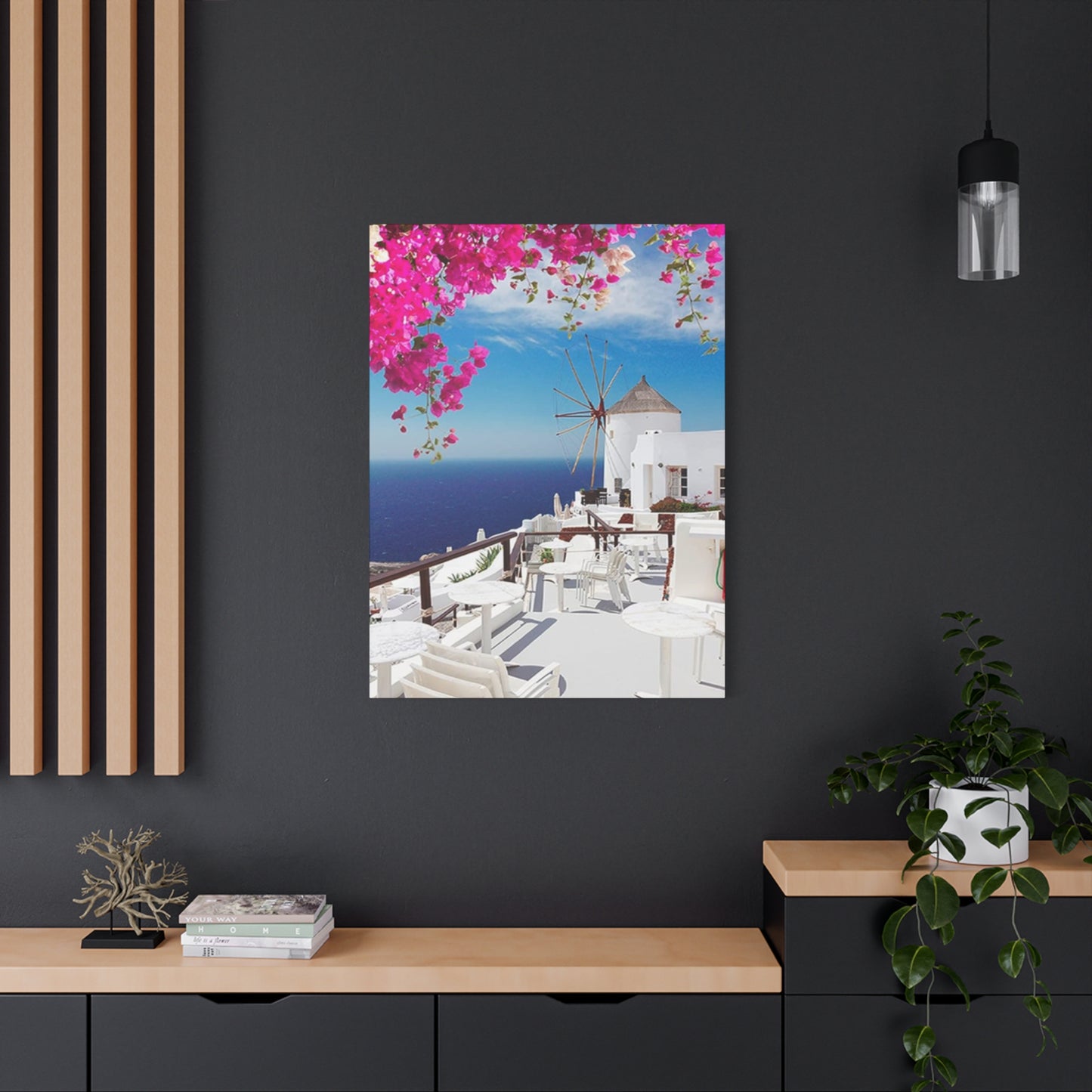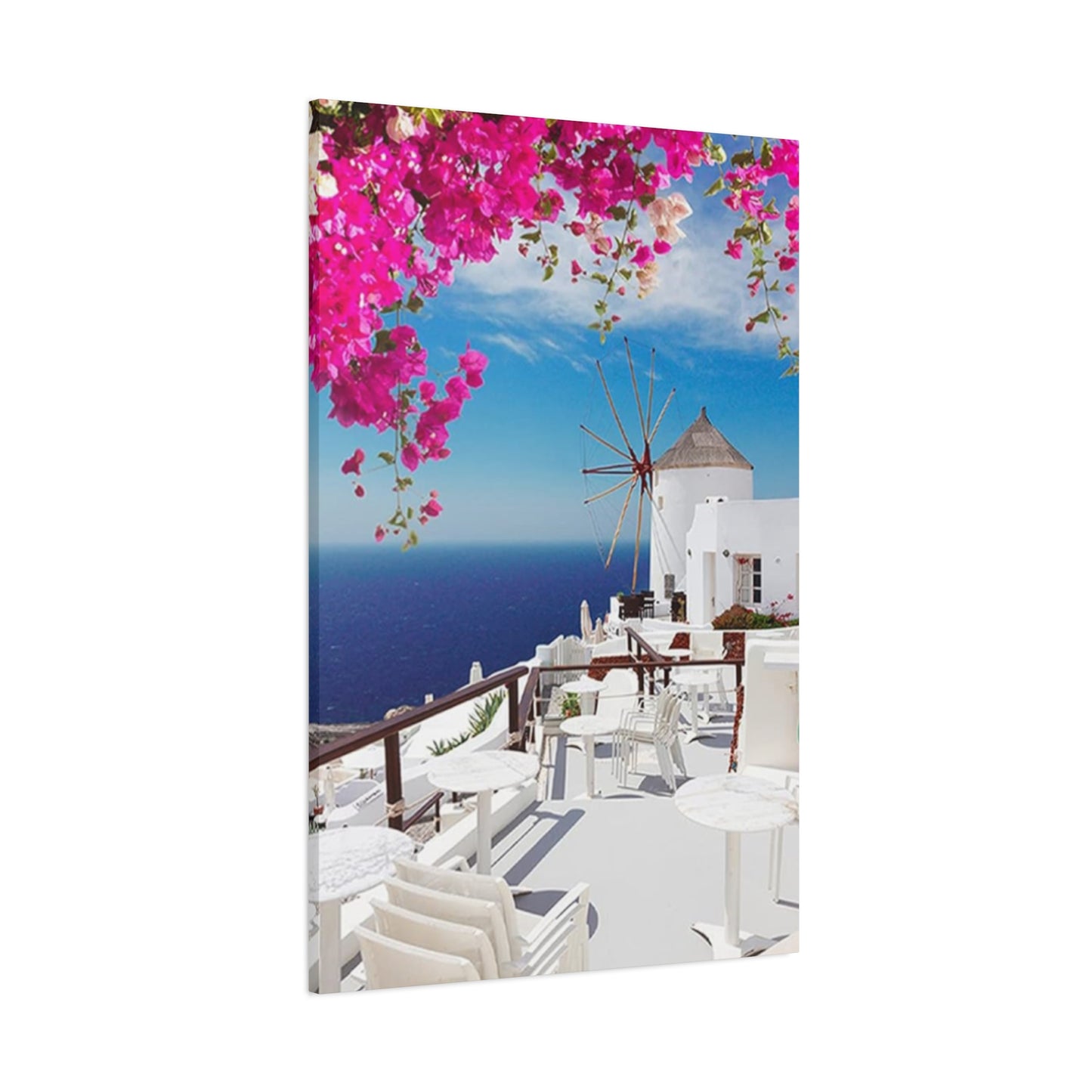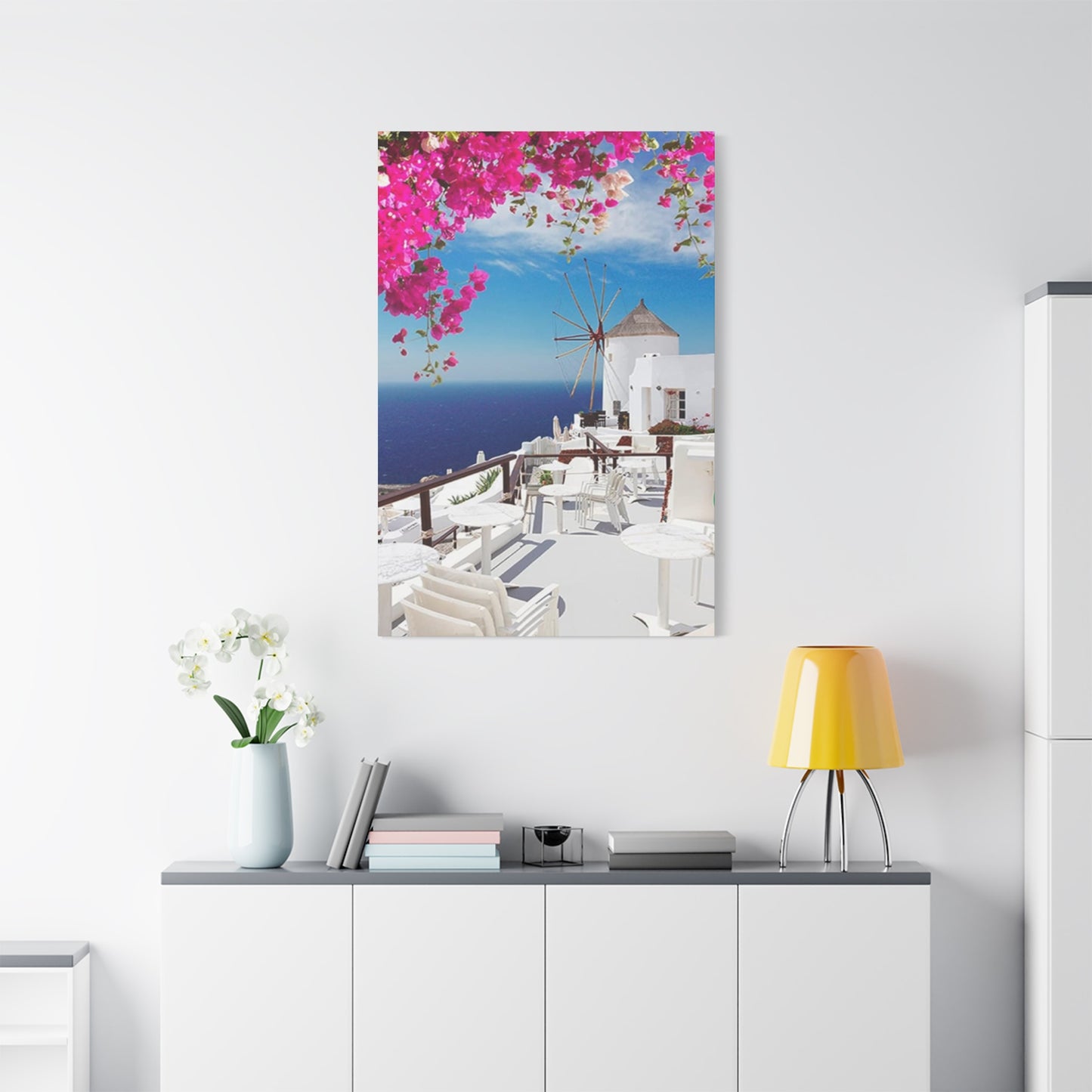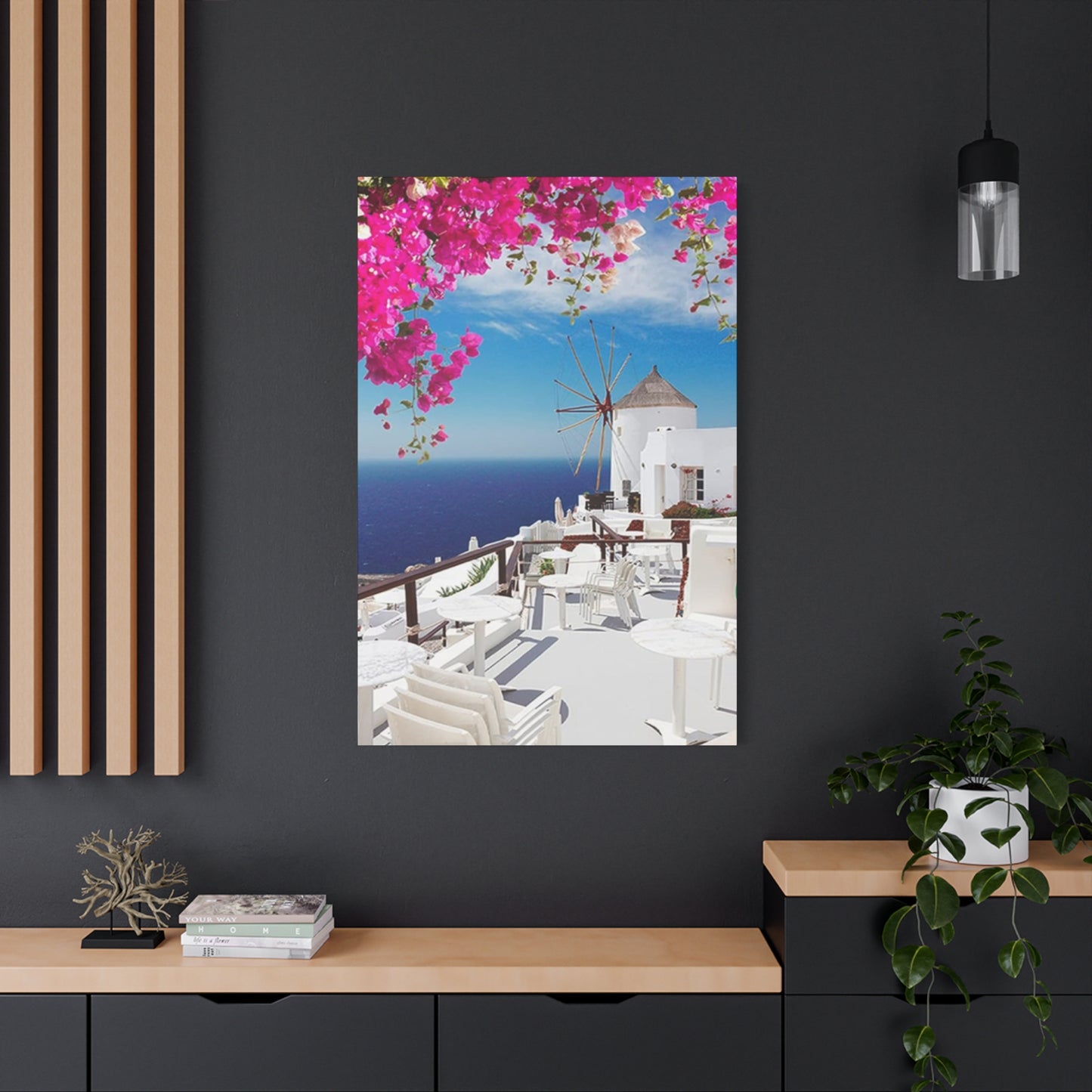Greece Windmill Wall Art: Bringing Mediterranean Charm to Your Living Environment
Greece windmill wall art canvas prints represent one of the most captivating ways to infuse your living environment with the timeless beauty and cultural richness of the Mediterranean. These stunning artistic representations capture the iconic windmills that have dotted the Greek landscape for centuries, serving not only as functional structures but as symbols of the nation's enduring spirit and connection to both land and sea. The appeal of Greece windmill wall art extends far beyond mere decoration, offering homeowners and art enthusiasts an opportunity to create atmospheric environments that evoke the warmth, tranquility, and scenic splendor of the Greek islands.
The artistic interpretation of Greek windmills in canvas print form has gained tremendous popularity among those seeking to establish a Mediterranean aesthetic in their homes. These prints showcase the distinctive architectural features that make Greek windmills instantly recognizable: their cylindrical stone bases, conical roofs, and the characteristic wooden sails that once harnessed the Aegean winds. When transformed into high-quality canvas prints, these elements become focal points that can dramatically enhance any room's visual appeal while maintaining the authentic cultural significance that makes Greek windmill imagery so compelling.
Contemporary canvas printing technology has revolutionized how we experience and display artistic representations of cultural landmarks. Greece windmill wall art benefits tremendously from these advances, as modern printing techniques can capture every nuance of color, texture, and detail that makes these structures so photographically and artistically appealing. From the weathered stone surfaces that speak of centuries of exposure to Mediterranean elements to the subtle variations in color that occur as sunlight plays across the windmill structures throughout the day, canvas prints can now reproduce these visual elements with remarkable fidelity.
The versatility of Greece windmill wall art canvas prints makes them suitable for a wide range of residential and commercial environments. Whether displayed in a coastal-themed living room, a Mediterranean-inspired dining area, or even a professional office seeking to create a calming, culturally rich atmosphere, these prints offer the flexibility to complement various decorative schemes while maintaining their distinctive character. The neutral color palettes commonly found in Greek windmill imagery, featuring whites, blues, and earth tones, provide excellent compatibility with both traditional and contemporary furnishing styles.
Historical Significance of Greek Windmills in Artistic Expression
Greek windmills carry profound historical significance that extends well beyond their practical function as grain processing facilities. These structures represent centuries of human ingenuity, cultural adaptation, and the harmonious relationship between communities and their natural environment. When we examine Greece windmill wall art canvas prints, we're not simply viewing decorative images but connecting with a rich tapestry of Mediterranean history that spans generations of Greek families who depended on these windmills for their livelihoods.
The windmills of Greece first appeared during the Venetian period, when Italian engineering techniques were introduced to the Greek islands. However, over time, these structures evolved to reflect distinctly Greek architectural sensibilities and practical adaptations to local conditions. The iconic white-painted stone construction that characterizes most Greek windmills developed partly as a practical response to the intense Mediterranean sun, as white surfaces reflect heat and help maintain cooler internal temperatures. This functional aspect has become one of the most visually striking elements captured in modern wall art representations.
Archaeological evidence suggests that windmills became integral to Greek island communities by the 15th century, with some estimates indicating that certain islands housed dozens of these structures during their peak operational periods. The windmills served not only individual families but entire communities, creating social and economic networks that strengthened island societies. This communal aspect of windmill culture adds depth to contemporary artistic interpretations, as Greece windmill wall art often captures not just the physical structures but the sense of community and shared heritage they represent.
The artistic documentation of Greek windmills began seriously during the 19th century when European travelers and artists discovered the photogenic qualities of these structures against the backdrop of azure skies and crystalline waters. Early paintings and sketches established many of the compositional conventions that continue to influence contemporary Greece windmill wall art, including the emphasis on contrasting the geometric precision of the windmill architecture against the organic forms of the surrounding landscape.
Modern canvas print technology has democratized access to high-quality reproductions of both historical artistic interpretations and contemporary photographic captures of Greek windmills. This accessibility has contributed to the growing appreciation for these cultural symbols and their incorporation into home decorative schemes worldwide. The ability to reproduce the subtle gradations of color and light that characterize Greek windmill photography has made it possible for homeowners to experience something approaching the actual visual impact of encountering these structures in their natural Mediterranean setting.
The preservation of Greek windmill heritage through artistic representation has become increasingly important as many of the original structures face challenges from modernization and changing economic conditions. Greece windmill wall art serves not only decorative purposes but also cultural preservation functions, keeping these iconic images alive in public consciousness and fostering appreciation for Greek cultural heritage among international audiences.
Aesthetic Elements That Define Greece Windmill Wall Art
The aesthetic appeal of Greece windmill wall art canvas prints stems from a unique combination of architectural elements, natural settings, and cultural symbolism that creates visually compelling compositions. These prints typically feature the distinctive cylindrical form of traditional Greek windmills, characterized by their stone construction, conical roofs, and the remnants of wooden sail mechanisms that once captured Mediterranean winds. The geometric precision of these structures provides strong focal points that anchor artistic compositions while creating pleasing contrasts with the organic elements of their surroundings.
Color plays a crucial role in the aesthetic impact of Greece windmill wall art. The traditional white-painted surfaces of authentic Greek windmills create brilliant focal points against the deep blues of Mediterranean skies and waters. This color relationship has become so iconic that it immediately evokes associations with Greek island culture, even for viewers who have never visited these locations. Canvas prints excel at reproducing these color relationships, particularly the subtle variations in white tones that occur as light conditions change throughout the day, from the cool whites of early morning to the warm, golden-tinged whites of sunset hours.
The textural elements captured in high-quality Greece windmill wall art add significant depth and interest to these prints. The weathered stone surfaces of centuries-old windmills display rich patinas that speak of their exposure to Mediterranean elements. These surface variations create visual interest through subtle gradations of light and shadow, providing tactile quality that enhances the overall impact of the artwork. Modern canvas printing techniques can reproduce these textural elements with remarkable accuracy, allowing viewers to appreciate details that might be overlooked in casual observation of actual structures.
Compositional elements in Greece windmill wall art often incorporate the dramatic landscapes that serve as backdrops for these structures. Many prints feature windmills positioned on hillsides or clifftops, creating compositions that emphasize both the architectural beauty of the structures and the spectacular natural settings they inhabit. The interplay between built and natural elements provides visual tension that keeps viewers engaged while reinforcing the harmonious relationship between human construction and environmental context that characterizes traditional Greek island development.
The lighting conditions captured in Greece windmill wall art significantly influence the aesthetic impact of these prints. Mediterranean light has unique qualities that result from the combination of intense sunlight, clear atmosphere, and reflection from surrounding water surfaces. This distinctive lighting creates sharp contrasts, vibrant colors, and dramatic shadow patterns that give Greek windmill photography its characteristic visual intensity. Canvas prints that successfully capture these lighting effects can transport viewers mentally to the Mediterranean setting, creating immersive experiences that go beyond simple wall decoration.
Seasonal variations in Greek windmill imagery provide additional aesthetic dimensions for wall art applications. Spring compositions might feature windmills surrounded by wildflowers and fresh vegetation, while summer images emphasize the stark beauty of structures against brilliant skies. Autumn and winter representations can showcase the windmills in more subdued lighting conditions, creating moodier, more contemplative aesthetic experiences. This seasonal variety allows homeowners to select Greece windmill wall art that complements their preferred atmospheric qualities.
Canvas Print Technology and Quality Considerations
The quality of Greece windmill wall art canvas prints depends heavily on the printing technology and materials used in their production. Modern canvas printing has evolved to provide exceptional reproduction quality that can capture the full range of colors, details, and textures present in original photographs or artistic works. Understanding these technical aspects helps consumers make informed decisions when selecting prints that will provide lasting satisfaction and visual impact in their chosen environments.
Digital printing technology forms the foundation of contemporary canvas print production. High-resolution digital files, typically requiring minimum resolutions of 300 DPI for optimal print quality, serve as the source material for Greece windmill wall art reproduction. The quality of these source files directly impacts the final print quality, making it essential that original photographs or artistic works possess sufficient detail and resolution to support large-format printing without quality degradation.
Canvas materials used for Greece windmill wall art prints vary significantly in quality and characteristics. Premium cotton canvas provides excellent color reproduction and longevity, while polyester canvas offers enhanced durability and resistance to environmental factors. The weave pattern and weight of the canvas material influence both the visual appearance and the tactile qualities of the finished print. Finer weaves generally provide smoother surface textures that enhance detail reproduction, while heavier canvas weights contribute to a more substantial, gallery-quality appearance.
Ink systems employed in canvas printing significantly affect the color accuracy, vibrancy, and longevity of Greece windmill wall art prints. Pigment-based inks generally provide superior color stability and fade resistance compared to dye-based alternatives, making them preferable for artworks intended for long-term display. The number of colors in the printing system also impacts reproduction quality, with systems using eight or more colors typically providing smoother color gradations and more accurate reproduction of subtle tonal variations present in Greek windmill photography.
Coating applications can enhance both the appearance and durability of canvas prints. Protective coatings help preserve colors from fading due to UV exposure while potentially adding visual depth through gloss or satin finishes. However, coating selection should consider the intended display environment and personal preferences for surface texture, as different coatings create varying degrees of light reflection that can affect viewing experiences under different lighting conditions.
Stretching and mounting techniques significantly influence the final presentation quality of Greece windmill wall art canvas prints. Professional stretching over wooden frames ensures that prints maintain proper tension and flatness while providing secure mounting systems for wall display. The depth of the stretcher frame affects the visual impact of the print, with deeper frames creating more dramatic shadow effects and enhanced three-dimensional appearance when viewed from angles.
Color calibration throughout the printing process ensures that Greece windmill wall art prints accurately reproduce the intended colors and tonal relationships present in original source materials. This involves calibrating monitors used for image preparation, maintaining consistent printer performance through regular calibration procedures, and using standardized color profiles that ensure predictable results across different printing runs.
Popular Sizes and Display Options for Greece Windmill Canvas Prints
Greece windmill wall art canvas prints are available in a diverse range of sizes to accommodate various display environments and decorative objectives. The selection of appropriate print dimensions involves considering factors such as wall dimensions, viewing distances, room proportions, and the desired visual impact within the overall decorative scheme. Understanding the characteristics and applications of different size options helps ensure optimal integration of these prints into residential and commercial environments.
Small format prints, typically ranging from 12x16 inches to 16x20 inches, provide excellent options for intimate display environments or as components of gallery wall arrangements. These sizes work particularly well in bedroom settings, home offices, or powder rooms where wall dimensions might not accommodate larger prints. Small Greece windmill wall art prints can also serve effectively as accent pieces within larger decorative compositions, complementing other Mediterranean-themed artwork or photographs while maintaining their distinctive visual character.
Medium format prints, generally falling within the 20x24 inch to 24x36 inch range, offer versatility for most residential display applications. These dimensions provide sufficient visual impact to serve as focal points in living rooms, dining areas, or hallways while remaining proportionate to typical residential wall dimensions. Medium format Greece windmill wall art prints can effectively bridge the gap between accent pieces and statement artwork, providing substantial visual presence without overwhelming the surrounding decorative elements.
Large format prints, ranging from 30x40 inches to 40x60 inches or larger, create dramatic focal points suitable for spacious environments with high ceilings and generous wall areas. These substantial prints can anchor entire room compositions, serving as central elements around which other decorative components are organized. Large format Greece windmill wall art works particularly effectively in great rooms, master bedrooms, or dining areas where the scale of the print can complement the architectural proportions of the environment.
Panoramic formats offer unique opportunities to showcase the sweeping landscapes that often serve as backdrops for Greek windmills. These elongated proportions, such as 12x36 inches or 16x48 inches, can effectively capture the horizontal expanse of Mediterranean coastlines or the rolling hills of Greek islands. Panoramic Greece windmill wall art prints work exceptionally well above sofas, beds, or dining room buffets where the horizontal orientation complements the furniture arrangement below.
Multi-panel displays provide opportunities to create impressive wall installations using multiple Greece windmill wall art canvas prints. Triptych arrangements, featuring three related prints, can create dynamic compositions that tell visual stories or showcase different perspectives of windmill subjects. Diptych formats using two prints can create balanced compositions suitable for symmetrical room arrangements or spaces requiring more moderate visual impact than single large-format prints might provide.
Custom sizing options allow for precise matching of Greece windmill wall art prints to specific architectural features or furniture arrangements. Many professional printing services can accommodate non-standard dimensions to fit particular wall niches, complement existing artwork, or match specific decorative requirements. Custom sizing ensures optimal integration while maintaining the visual integrity of the windmill imagery.
Gallery wrap presentation, where the canvas print wraps around the edges of the stretcher frame, eliminates the need for traditional framing while creating clean, contemporary appearances. This presentation method works particularly well for Greece windmill wall art, as the extended imagery around the edges can include portions of the Mediterranean landscape, enhancing the immersive quality of the print.
Color Palettes and Their Impact on Room Atmospheres
The color palettes characteristic of Greece windmill wall art canvas prints possess remarkable ability to influence room atmospheres and create specific emotional responses within residential environments. These prints typically feature harmonious combinations of blues, whites, and earth tones that reflect the natural Mediterranean environment, offering homeowners powerful tools for establishing desired moods and aesthetic experiences through strategic color integration.
The dominant blue and white color scheme found in most Greece windmill wall art directly connects to the iconic architectural traditions of Greek island communities. The brilliant white surfaces of traditional windmills, contrasted against the deep azure of Mediterranean skies and waters, create color relationships that immediately evoke associations with coastal tranquility and Mediterranean lifestyle. When incorporated into residential environments, these color combinations can establish calming, serene atmospheres that promote relaxation and stress reduction.
Warm earth tones frequently appear in Greece windmill wall art through the depiction of surrounding landscapes, weathered stone surfaces, and natural vegetation. These colors, including various shades of ochre, sienna, and umber, provide grounding elements that balance the cooler blues and whites while adding visual warmth that prevents color schemes from becoming too stark or cold. The integration of earth tones helps create more inviting, comfortable environments that maintain Mediterranean character while ensuring livability.
Seasonal color variations in Greece windmill wall art offer opportunities to fine-tune atmospheric effects according to personal preferences and room functions. Spring imagery might emphasize fresh greens and soft pastels that create energizing, optimistic atmospheres suitable for breakfast rooms or home offices. Summer representations featuring intense blues and brilliant whites can establish cooling, refreshing environments perfect for bedrooms or living areas where relaxation is prioritized.
The psychological impact of Greece windmill wall art colors extends beyond immediate visual appeal to influence occupant behavior and emotional states. Blue tones, scientifically associated with reduced stress levels and improved concentration, make these prints valuable for home office environments or study areas. The calming effects of blue combined with the purity suggested by white surfaces can create therapeutic environments that support mental well-being and emotional balance.
Color temperature considerations play crucial roles in how Greece windmill wall art integrates with existing room lighting and decorative elements. Cool color temperatures, emphasized by blues and pure whites, work effectively in rooms receiving abundant natural light or in environments where cooling psychological effects are desired. Warmer color temperatures, achieved through emphasis on golden hour lighting or earth tone elements, create more intimate, cozy atmospheres suitable for evening relaxation or romantic dining environments.
Complementary color relationships allow Greece windmill wall art to enhance existing room color schemes through strategic accent placement. The blue elements in windmill prints can complement orange or coral accent colors present in furnishings or accessories, creating dynamic color relationships that energize room compositions. Similarly, the white elements can serve as neutral bridges that harmonize disparate color elements within complex decorative schemes.
Monochromatic approaches to Greece windmill wall art can create sophisticated, unified room atmospheres through emphasis on single color families. Black and white interpretations of windmill imagery can provide dramatic focal points while maintaining compatibility with any existing color scheme. Sepia or warm-toned monochromatic treatments can create nostalgic, romantic atmospheres that emphasize the historical and cultural aspects of Greek windmill heritage.
Mediterranean Design Integration Strategies
Integrating Greece windmill wall art canvas prints into Mediterranean-inspired decorative schemes requires understanding the broader design principles that characterize this popular style. Mediterranean design philosophy emphasizes natural materials, comfortable functionality, and the seamless blending of indoor and outdoor living experiences. Greece windmill wall art serves as perfect focal points within this design approach, providing authentic cultural references while supporting the overall aesthetic objectives that make Mediterranean design so appealing.
Natural material integration forms a cornerstone of successful Mediterranean design implementation. Greece windmill wall art pairs beautifully with stone surfaces, exposed wooden beams, wrought iron elements, and ceramic tiles that characterize traditional Mediterranean architecture. The weathered textures captured in windmill photography complement similar textural qualities found in natural materials, creating cohesive environments that feel authentically connected to Mediterranean cultural traditions.
Furniture selection for Mediterranean environments should emphasize comfort, durability, and connection to traditional craftsmanship. Greece windmill wall art works exceptionally well with furniture pieces featuring natural wood finishes, wrought iron frameworks, and upholstery in natural fabrics such as linen or cotton. The casual elegance suggested by Mediterranean furniture styles harmonizes perfectly with the timeless, unpretentious character of Greek windmill imagery.
Lighting considerations play crucial roles in creating authentic Mediterranean atmospheres that complement Greece windmill wall art. Natural lighting should be maximized through generous window treatments and minimal obstruction of daylight sources. Artificial lighting should emphasize warm color temperatures and multiple source points that create ambient rather than harsh illumination. Wrought iron chandeliers, ceramic table lamps, and strategically placed accent lighting can enhance both the wall art and the overall Mediterranean atmosphere.
Textile integration provides opportunities to reinforce Mediterranean themes while complementing Greece windmill wall art color palettes. Natural fabric choices including linen, cotton, and wool in colors that echo those found in the prints help create unified decorative schemes. Patterns inspired by Mediterranean traditions, such as geometric motifs or stylized natural forms, can provide visual interest without competing with the windmill imagery for attention.
Plant integration serves multiple functions within Mediterranean design schemes, providing natural beauty while reinforcing connections to outdoor environments. Greece windmill wall art pairs beautifully with Mediterranean plant varieties such as olive trees, lavender, rosemary, and citrus plants. These selections not only provide appropriate visual companions for the wall art but also contribute authentic fragrances and textures that enhance the overall sensory experience of Mediterranean-inspired environments.
Architectural element coordination ensures that Greece windmill wall art integrates harmoniously with existing structural features. Exposed ceiling beams, stone or brick accent walls, arched doorways, and tile flooring all provide architectural backdrops that enhance the cultural authenticity suggested by windmill imagery. Even in environments lacking original Mediterranean architectural features, strategic additions such as decorative columns, tile backsplashes, or exposed beam treatments can create supportive contexts for the wall art.
Color coordination throughout Mediterranean environments should emphasize the natural palette relationships found in Greece windmill wall art. Wall colors in warm whites, soft blues, or earth tones provide appropriate backgrounds that allow the prints to serve as focal points without creating conflicting color relationships. Accent colors can be drawn from secondary elements within the windmill prints, such as vegetation colors or architectural details, ensuring cohesive color relationships throughout the environment.
Framing and Presentation Techniques
The presentation method selected for Greece windmill wall art canvas prints significantly influences their visual impact and integration within decorative environments. While canvas prints offer the advantage of not requiring traditional framing, various presentation techniques can enhance their appearance and create different aesthetic effects suitable for diverse decorative objectives. Understanding these options helps ensure optimal display results that maximize the artistic and decorative potential of windmill imagery.
Gallery wrap presentation represents the most common approach for displaying canvas prints, where the image extends around the edges of the stretcher frame, creating finished appearances suitable for immediate hanging. For Greece windmill wall art, gallery wrapping allows the Mediterranean landscape elements to continue around the sides, enhancing the immersive quality of the prints. The depth of the stretcher frame affects the three-dimensional appearance, with deeper frames creating more substantial shadow effects that can enhance the architectural qualities suggested by windmill structures.
Traditional framing can provide Greece windmill wall art with more formal presentations suitable for environments requiring enhanced sophistication or integration with other framed artwork. Frame selection should complement both the windmill imagery and the surrounding decorative elements. Natural wood frames in warm tones can emphasize the rustic, traditional aspects of Greek windmill culture, while metal frames in bronze or pewter finishes can create more contemporary presentations that maintain Mediterranean character.
Float mounting techniques create dramatic presentation effects by suspending the canvas print within the frame, creating shadow gaps between the artwork and the frame edges. This approach works particularly well for Greece windmill wall art as it emphasizes the three-dimensional qualities of the canvas while creating clean, contemporary presentations. Float mounting can make prints appear larger and more substantial while providing protective benefits through the frame structure.
Multiple panel arrangements offer opportunities to create impressive wall installations using related Greece windmill wall art prints. Triptych presentations featuring three coordinated prints can tell visual stories or showcase different perspectives of windmill subjects. The spacing between panels affects the overall visual impact, with closer spacing creating more unified compositions while wider spacing emphasizes the individual character of each print.
Matting applications, while less common with canvas prints than with traditional photographs, can provide color coordination and visual breathing room that enhances the presentation of Greece windmill wall art. Fabric mats in colors that complement the Mediterranean palette can create sophisticated presentations while providing protective benefits. However, matting adds complexity and cost to the framing process and may not be necessary for high-quality canvas prints.
Lighting integration can dramatically enhance the presentation of Greece windmill wall art through strategic illumination that emphasizes the dimensional qualities of canvas textures and enhances color reproduction. Picture lighting, track lighting, or strategically placed accent lights can create museum-quality presentations while ensuring optimal viewing conditions under various ambient lighting situations. LED lighting systems offer energy efficiency and reduced heat generation that helps preserve print quality over time.
Installation considerations ensure that Greece windmill wall art displays safely and attractively while maintaining proper positioning for optimal viewing. Wall anchor systems must accommodate the weight of stretched canvas prints, which can be substantial for larger formats. Leveling tools ensure proper horizontal alignment, while measuring tools help achieve appropriate spacing in multiple print arrangements. Professional installation may be advisable for large or valuable prints to ensure secure mounting and optimal positioning.
Emotional Benefits
Greece windmill wall art canvas prints offer significant psychological and emotional benefits that extend far beyond their decorative functions, creating positive impacts on mental well-being and emotional states within residential environments. The imagery of Greek windmills carries inherent associations with tranquility, natural beauty, and cultural richness that can contribute to stress reduction and improved quality of life for occupants of environments where these prints are displayed.
The calming influence of Mediterranean imagery stems from its associations with vacation experiences, natural beauty, and peaceful lifestyle concepts that contrast favorably with the stress and complexity of contemporary urban life. Greece windmill wall art can serve as visual anchors that promote relaxation and provide mental escape opportunities during stressful periods. The simple, enduring forms of windmill architecture suggest stability and permanence that can provide psychological comfort in uncertain times.
Color psychology research indicates that the blue and white color combinations characteristic of Greece windmill wall art produce measurable effects on stress levels and cognitive performance. Blue tones have been scientifically demonstrated to reduce blood pressure, slow heart rate, and promote feelings of calm and security. When combined with the purity and cleanliness suggested by white architectural surfaces, these colors create environmental conditions that support mental clarity and emotional balance.
Biophilic design principles suggest that humans possess innate connections to natural environments that can be supported through appropriate imagery and design choices. Greece windmill wall art often incorporates natural landscape elements including skies, vegetation, and geological formations that can help satisfy psychological needs for connection with nature, even within urban or suburban residential environments. This connection can contribute to improved mood, reduced anxiety, and enhanced overall life satisfaction.
Memory and association benefits result from the ability of Greece windmill wall art to evoke positive memories of travel experiences or aspirational lifestyle concepts related to Mediterranean culture. For individuals who have visited Greek islands, these prints can serve as powerful reminders of positive experiences while providing daily reinforcement of happy memories. For those who aspire to visit these locations, the artwork can provide motivation and positive anticipation that enhances overall emotional well-being.
Cultural enrichment through exposure to Greece windmill wall art contributes to intellectual stimulation and broadened worldview perspectives that can enhance personal growth and satisfaction. These prints provide daily reminders of the diversity and beauty present in human cultural expressions while encouraging appreciation for traditions and lifestyles different from one's immediate experience. This cultural exposure can contribute to greater empathy, curiosity, and intellectual engagement.
Meditation and mindfulness benefits can result from contemplating the peaceful imagery characteristic of Greece windmill wall art. The simple, enduring forms of windmill architecture provide excellent focal points for meditation practice, while the natural beauty of Mediterranean landscapes can support mindfulness exercises that promote present-moment awareness. Regular contemplation of these images can contribute to improved stress management and emotional regulation skills.
Social benefits emerge from the conversation-starting potential of Greece windmill wall art within entertaining and social environments. These prints provide natural topics for discussion about travel experiences, cultural interests, and aesthetic preferences that can facilitate social connections and shared experiences. The universal appeal of Mediterranean imagery creates common ground that can enhance social interactions and relationship building.
Buying Guide and Quality Assessment
Selecting high-quality Greece windmill wall art canvas prints requires understanding the factors that distinguish superior products from lower-quality alternatives. The canvas print market includes wide variation in quality standards, materials, and production techniques that significantly affect both immediate visual impact and long-term satisfaction. This comprehensive buying guide provides the knowledge necessary to make informed purchase decisions that ensure optimal results.
Resolution requirements form the foundation of quality assessment for Greece windmill wall art canvas prints. High-resolution source images, typically requiring minimum 300 DPI at the intended print size, ensure sharp detail reproduction and smooth color gradations. Lower resolution images may appear pixelated or soft when printed at larger sizes, significantly diminishing the visual impact of windmill imagery. Reputable sellers should be able to provide information about source image resolution and recommend appropriate print sizes based on available resolution.
Canvas material evaluation involves examining both the base fabric and any coating treatments applied during manufacturing. Premium cotton canvas provides excellent color reproduction and longevity, while maintaining the traditional texture associations that enhance the artistic appeal of Greece windmill wall art. Polyester canvas offers enhanced durability and moisture resistance but may lack the authentic texture qualities preferred by many buyers. The weight and weave characteristics of canvas materials affect both appearance and durability, with heavier materials generally providing more substantial, gallery-quality presentations.
Printing technology assessment requires understanding the ink systems and printing processes used to create Greece windmill wall art canvas prints. Pigment-based ink systems provide superior color stability and fade resistance compared to dye-based alternatives, making them preferable for artwork intended for long-term display. The number of colors used in the printing process affects color accuracy and smooth gradation reproduction, with systems using eight or more colors typically providing superior results.
Color accuracy evaluation involves comparing print samples to original images when possible, or assessing the overall color quality and vibrancy of the finished prints. Quality Greece windmill wall art should reproduce the distinctive blue and white color relationships characteristic of Mediterranean imagery with accuracy and vibrancy that captures the visual impact of the original scenes. Color shifts, dullness, or inaccurate reproduction can significantly diminish the aesthetic appeal and authenticity of windmill prints.
Stretcher frame quality significantly affects both the appearance and longevity of Greece windmill wall art canvas prints. Premium stretcher frames use kiln-dried wood construction that resists warping and provides stable support for the stretched canvas. Corner construction should feature solid joinery techniques rather than simple stapling, ensuring long-term structural integrity. The depth of stretcher frames affects the three-dimensional appearance of prints, with deeper frames generally creating more impressive presentations.
Stretching quality assessment involves examining the tension and alignment of the canvas over the stretcher frame. Properly stretched canvas should exhibit uniform tension without sagging or excessive tightness that might cause future warping. Corner areas require particular attention, as poor stretching technique often becomes most apparent at these points. Quality stretching ensures that Greece windmill wall art maintains proper appearance and prevents premature deterioration.
Coating evaluation involves assessing any protective treatments applied to the canvas surface. Quality coatings should enhance color depth and provide UV protection without creating distracting glare or altering the natural texture of the canvas material. Coating application should be uniform without streaks, bubbles, or other defects that could affect appearance or durability.
Packaging and shipping considerations become important when purchasing Greece windmill wall art canvas prints online or from distant suppliers. Quality suppliers use appropriate protective packaging that prevents damage during shipping while ensuring that prints arrive in pristine condition. Curved shipping containers designed specifically for canvas prints provide superior protection compared to flat packaging that may allow bending or folding damage.
Installation and Hanging Techniques
Proper installation of Greece windmill wall art canvas prints ensures both safety and optimal visual presentation while protecting the artwork investment and maintaining attractive displays over extended periods. Installation techniques vary depending on print size, wall construction, and environmental factors, making it important to understand the various approaches and select methods appropriate for specific situations.
Wall anchor selection represents the most critical safety consideration when installing Greece windmill wall art canvas prints. Canvas prints, particularly larger formats, can be surprisingly heavy when combined with stretcher frames and mounting hardware. Wall stud locations provide the most secure mounting points for heavier prints, requiring stud finders or exploration techniques to locate appropriate attachment points. For hollow wall installations, heavy-duty hollow wall anchors rated for weights exceeding the print weight provide necessary security.
Hanging hardware options include various approaches suited to different installation requirements and aesthetic preferences. Traditional picture hanging wire provides flexibility in positioning while distributing weight across multiple attachment points on the stretcher frame. However, wire hanging systems can allow prints to shift position over time and may create gaps between the print and wall surface. D-ring hangers provide more stable positioning with direct attachment to wall-mounted hooks or screws.
Sawtooth hangers offer simple installation and clean appearances but may not provide adequate support for larger Greece windmill wall art canvas prints. These hangers work best for smaller formats where weight is minimal and precise positioning is less critical. French cleat systems provide maximum security and precise positioning for valuable or heavy prints, though they require more complex installation procedures.
Leveling techniques ensure that Greece windmill wall art displays with proper horizontal alignment that enhances professional appearance and prevents distracting visual irregularities. Spirit levels or laser levels help achieve accurate positioning during installation, while measuring tools ensure consistent spacing in multiple print arrangements. Slight adjustments after initial hanging often improve final positioning, making adjustable hanging systems preferable for precise installations.
Height placement considerations affect both aesthetic impact and practical viewing comfort for Greece windmill wall art canvas prints. Standard gallery practice suggests positioning prints so that their centers align approximately 57-60 inches from floor level, though this may require adjustment based on furniture placement, ceiling height, and viewer preferences. Prints displayed above furniture should maintain appropriate spacing relationships that create unified visual compositions without appearing disconnected from supporting elements.
Multiple print arrangements require careful planning to achieve balanced compositions that enhance rather than compete with each other. Equal spacing between prints generally creates more unified appearances, while varied spacing can provide dynamic visual rhythms when executed skillfully. Template systems using paper cutouts help visualize arrangements before making permanent wall attachments, reducing installation time and preventing unnecessary wall damage from repositioning.
Professional installation services may be advisable for valuable Greece windmill wall art canvas prints or installations involving multiple large-format prints. Professional installers possess specialized tools, experience with various wall construction types, and insurance coverage that protects against installation-related damage. Complex installations involving custom lighting, specialized mounting systems, or challenging architectural features often benefit from professional expertise.
Safety considerations during installation include using appropriate ladder systems, ensuring adequate lighting for precise work, and having assistance available when handling large prints. Power tool use requires attention to electrical safety and dust control, particularly when drilling into walls that may contain unknown electrical or plumbing systems. Safety equipment including eye protection and dust masks may be appropriate depending on installation requirements.
Conclusion
Incorporating Greece windmill wall art into your living environment is more than just a decorative choice—it’s an invitation to embrace the serene beauty and timeless charm of the Mediterranean lifestyle. These iconic windmills, with their crisp white structures set against vivid blue skies and the endless sea, evoke a sense of tranquility, simplicity, and elegance that can transform any space into a peaceful sanctuary.
The artistic portrayal of Greek windmills captures not only their architectural uniqueness but also the cultural heritage and natural splendor of the Aegean islands. Hanging this art in your home or office brings a breath of fresh coastal air and a subtle yet powerful connection to Greece’s rich history and laid-back way of life. Whether you choose a minimalist print or a vibrant, detailed painting, this wall art serves as a daily reminder of sunny days, gentle breezes, and the joyous rhythm of island living.
Moreover, Greece windmill wall art complements a wide range of interior design styles—from modern and coastal to rustic and bohemian—making it a versatile choice for enhancing your décor. It adds visual interest and depth while maintaining an airy and light atmosphere that promotes relaxation and creativity.
Ultimately, bringing Mediterranean charm into your space with Greece windmill wall art is about more than aesthetics; it’s about creating an environment that uplifts your mood and sparks inspiration. This timeless imagery offers a perfect blend of beauty and meaning, allowing you to carry a piece of Greece’s enchanting spirit with you wherever you are. By embracing this art, you invite warmth, culture, and serenity into your everyday life, making your living environment truly special.

















